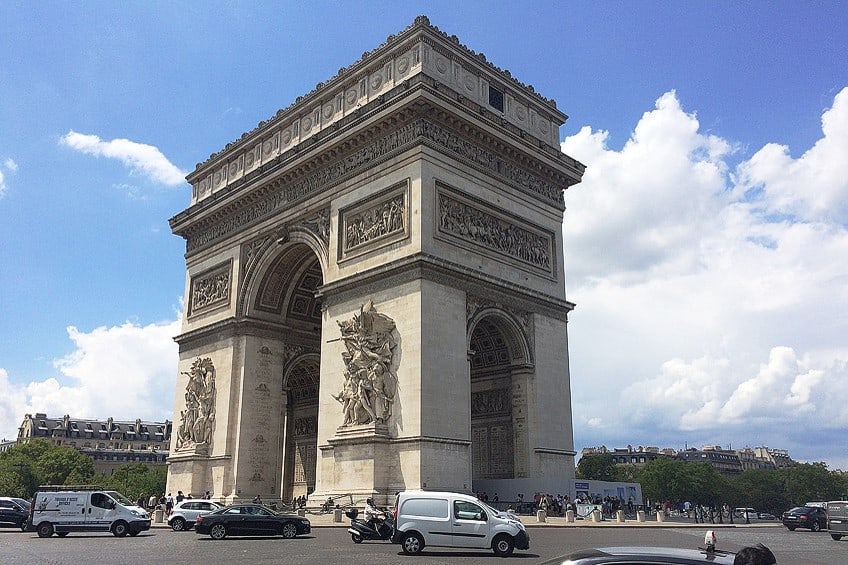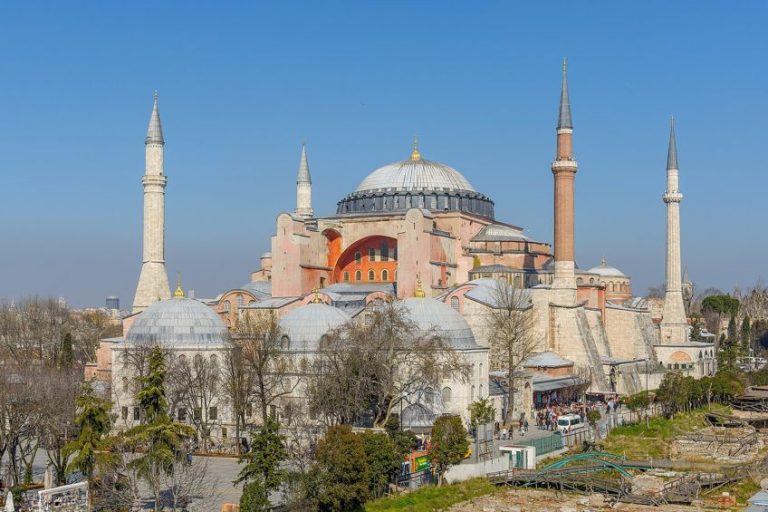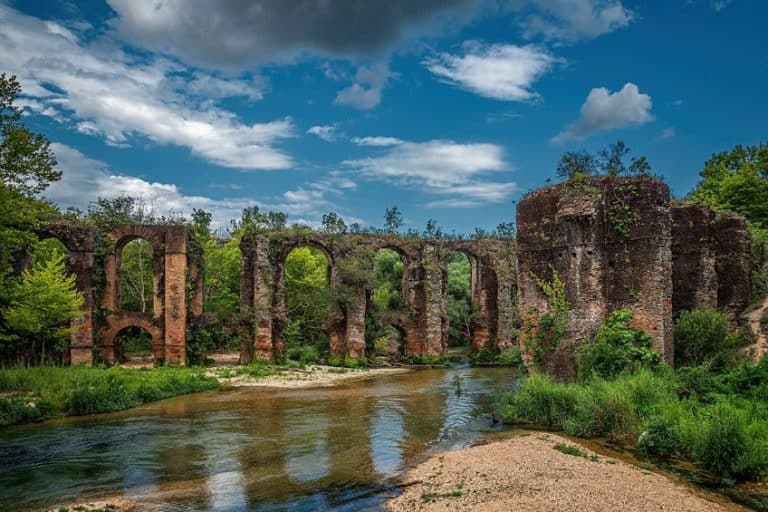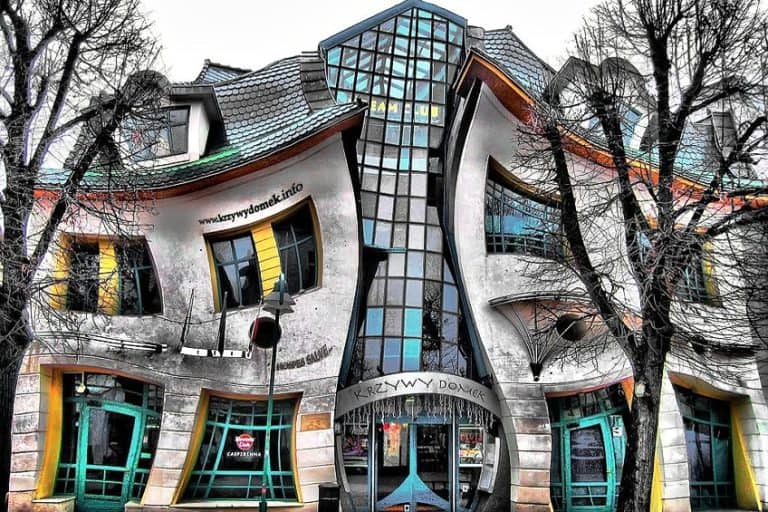Arc de Triomphe – A Monumental Marvel
The Arch of Triumph in Paris, known to the French as the Arc de Triomphe, is widely regarded as one of the most recognizable monuments in the world. But, why was the Arc de Triomphe built to begin with, and who built the Arc de Triomphe? This article will reveal all there is to know about the triumphal arch in Paris, as well as answer all your related questions, such as, “when was the Arc de Triomphe built and how tall is the Arc de Triomphe?”.
Why Was the Arc de Triomphe Built?
| Architect | Jean-François-Thérèse Chalgrin (1739 – 1811) |
| Date Completed | 1836 |
| Materials | Stone and plaster |
| Function | Monument |
| Location | Place Charles de Gaulle, Paris, France |

The Arc de Triomphe commemorates those who sacrificed their lives for France during the Napoleonic Wars and the French Revolution by engraving the names of all French triumphs and commanders on its inner and exterior surfaces. The Tomb of the Unknown Soldier is located beneath the monument.
The man who designed and built Arc de Triomphe was Jean Chalgrin, who depicted nude French heroes fighting Germanic warriors sporting beards and chain mail.
It would go on to inspire many more monuments around the world which depicted patriotic messages of triumph. Until the Monumento a la Revolución was built in 1938 in Mexico City, the Arch of Triumph in Paris was ranked as the tallest monumental arch in the world at 50 meters in height.
History of the Triumphal Arch in Paris
The Arch of Triumph in Paris is situated on the bank of the Seine, at the center of a dodecagonal design of 12 radiating avenues. The Arc de Triomphe was commissioned in 1806, following Napoleon’s success at Austerlitz at the height of his power. It took two years just to put down the foundations, and when Napoleon reached Paris with Archduchess Marie-Louise of Austria, his new bride, he ordered that a timber mock-up of the complete arch be built. Jean-Nicolas Huyot then took over the project when Jean Chalgrin passed away in 1811.

The 19th Century
When Napoleon fell from power in 1814, the House of Bourbon once again returned to its seat of power, and construction of the Arch of Triumph in Paris came to a grinding halt. It would only be in the 1830s when King Louis-Philippe was in power, that construction resumed. When Napoleon’s exhumed remains were brought back to Paris from Saint Helena Island on the 15th of December, 1840, his carriage passed directly underneath the arc en route to Les Invalides, his final place of rest.
On the 22nd of May, 1885, the body of the writer Victor Hugo was put up on display under the triumphal arch in Paris.
The 20th Century
The sword wielded by the Republic in the Marseillaise plaque is reported to have broken off in 1916, on the exact day the Battle of Verdun started. Tarpaulins were quickly used to cover it and prevent any unpleasant foreboding interpretations of the occurrence. The pilot, Charles Godefroy, successfully flew his aircraft under the Arc de Triomphe on the 7th of August, 1919. The pilot originally assigned with attempting the flight, Jean Navarre, died on the 10th of July, 1919, when his aircraft crashed near Villacoublay while practicing for the anticipated flight.
After its completion, the Arc de Triomphe served as a meeting place for French soldiers returning from successful military operations.
A 1945 US postage stamp depicts the Arch of Triumph in Paris in the background as triumphant American soldiers walk along the Champs-Élysées and American jets fly overhead. However, since the burial of the Unknown Soldier, all parades have been prohibited from walking underneath the Arc de Triomphe.

Out of respect for the interred soldier, the route of all marches would lead up to the arch and then continue around the side of it. The monument had become significantly blackened from car pollution and cola soot by the early 1960s, and it was subsequently cleaned and bleached from 1965 to 1966. As part of their campaign of terror, the Armed Islamic Group of Algeria planted an explosive near the Arc in 1995, injuring 17 individuals.
The 21st Century
As part of the Yellow Vests demonstrations in late 2018, the Arc de Triomphe was vandalized. Looters painted graffiti on the memorial and raided its little museum. The Yellow Vests Rallies in France are a succession of nationalist, populist weekly demonstrations that started on the 17th of November, 2018. Protesters first argued for economic fairness, but later demanded political and institutional improvements.
The arc was covered in silver blue cloth and red rope in September 2021, an installation envisioned by artists Jeanne-Claude and Christo ever since the early 1960s.
Design of the Arc de Triomphe
Jean Chalgrin designed the arch in the Neoclassical manner of ancient Roman-era architecture. The primary sculptures are not integrated friezes, but rather stand-alone trophies placed on the huge brick masses, similar to bronze-gilded appliqués on Empire furniture. The sculptures of the Arc de Triomphe were created by prominent academic sculptors from France, including François Rude, Jean-Pierre Cortot, James Pradier, Antoine Étex, and Philippe Joseph Henri Lemaire.
Since Napoleon’s downfall, the sculpture depicting Peace has been seen as symbolizing the Peace of 1815, a treaty that was signed once he was no longer in power.
Above the finely sculpted frieze of troops in the attic are 30 shields inscribed with the names of significant French triumphs during the Napoleonic Wars and the French Revolution, and the names of the generals who were slain in combat are underlined.

Alexandre Falguière’s enormous sculpture, Le Triomphe de la Révolution, topped the arch from 1882 to 1886. In February 2007, a permanent installation designed by the architect Christophe Girault and the artist Maurice Benayoun premiered within the Arch of Triumph in Paris.
The Addition of the Tomb of the Unknown Soldier
The Tomb of the Unknown Soldier is located under the Arc de Triomphe. A permanent flame burns in honor of the unidentified soldiers who died in service during the first World War. Every year, on the 11th of November, a ceremony is conducted at the Tomb of the Unknown Soldier to commemorate the Armistice agreement anniversary, which was signed by the Germans and the Entente Powers. On the 12th of November, 1919, it was decided that the unidentified soldier’s remains would be interred beneath the Arc de Triomphe, but after a widespread letter-writing campaign, officials changed their minds.
On the 10th of November 1920, the coffin was temporarily housed in the chapel on the first level of the Arc, and on the 28th of January 1921, it was laid in its eternal place of rest.
Placement of the Arc de Triomphe
The degree of Paris’ transformation can be properly appreciated from the top of the Arc de Triomphe, at the intersection of the 8th, 16th, and 17th arrondissements. Symmetry and utility developed from the tangle of roadways that had randomly crisscrossed the area. Traditionally, the basic star layout cut through dense woods to ease hunting, allowing the hunter to position himself in the middle and easily kill animals that crossed the dirt pathways. The hillside on which the Arc is located was dropped, flattened, and finally terraced once urban expansion started in 1770.
The Place de l’Étoile was spanned by the General Farmers’ Wall, which served as a tax boundary for Paris commencing in 1787.
A customs barrier once stood at the end of what is currently the Champs Élysées. The final Place de l’Étoile design was authorized by Georges Eugène Haussmann. Napoleon III commissioned Haussmann to revitalize Paris, and he embarked on the most ambitious program of urban rebuilding ever undertaken by a large city. He delegated the development surrounding the Arc to architect Jacques Ignace Hittorf. The circular plaza was surrounded by 12 majestic avenues creating a star.
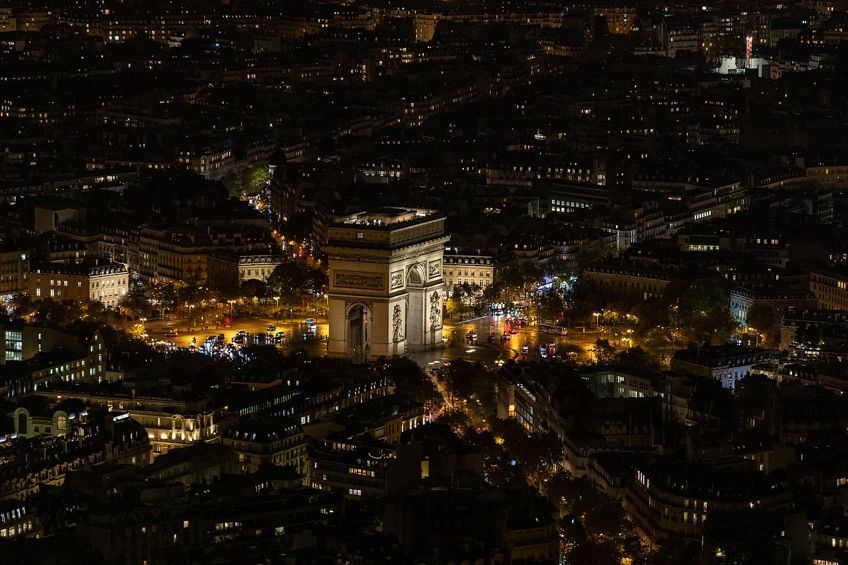
The plaza itself is 120 meters across. The Arc’s orientation is part of Paris’ historic axis, the Voie Triomphale, and has been carefully planned such that the sun sets under the Arc twice a year, on the 10th of May 10th and the 1st of August. The view runs in a straight line from the Arc de Triomphe du Carrousel’s courtyard and through the Tuileries Gardens.
It then follows the Avenue des Champs-Élysées to the Arc de Triomphe, where it reaches the Obelisk at the Place de la Concorde.
Access to the Triumphal Arch in Paris
A pedestrian subterranean corridor connects the tunnel at the northern corner of the Champs-Élysées to the Avenue de la Grande Armée, providing access to the Arc de Triomphe. If you have the energy, you could walk the 284 stairs to the terrace; otherwise, there is also an elevator.
The breathtaking panoramic views from the terrace are best seen at sunset when the sun’s rays bathe Paris in a glorious golden glow.

A little museum with interactive displays on the development of the monument, featuring original papers, engravings, sketches, pictures, models of its development, as well as other historical facts, is located one floor below the terrace.
The most grandiose of all monumental arches is the Arch of Triumph in Paris. Despite several revisions from the initial designs to reflect political changes and control disputes, this triumphal arch in Paris retains the spirit of the original concept, which was a forceful, and unifying symbol for France. The Arc de Triomphe was created in dedication to those who served France, especially during the Napoleonic Wars. The triumphal arch in Paris is regarded as the cornerstone of the historic axis, a series of monuments and major thoroughfares that spans from the courtyard of the Louvre Palace, and then on to the suburbs of Paris. Throughout the decades, it was often used as a meeting point after any major victory.
Frequently Asked Questions
When Was the Arc de Triomphe Built?
Construction of this triumphal arch in Paris started in 1806. Construction only ended 30 years later, in 1836. Once construction had begun, Napoleon quickly lost enthusiasm for the project, and it came to a standstill for several years. By the time he married Marie-Louise in 1810, he had barely finished the foundations. After Napoleon’s abdication in 1814, work halted even more. He died in exile on Saint Helena Island in 1821, before the monument was finished, and construction did not resume until 1823. On the 29th of July 1836, the Arch of Triumph in Paris was finally inaugurated after three decades of construction.
Why Was the Arc de Triomphe Built?
This iconic monument was constructed in honor of all the French troops who had served during the various wars over the years, specifically during the reign of Napoleon. There is also a tomb containing the remains of a soldier that was never identified, and now serves as a memorial for all of the French soldiers who served their country but were never identified. The names of the various battles, as well as the commanders who were in charge, are all listed on the arch, with the names of the generals who had died in battle underlined.
Who Built the Arc de Triomphe in Paris?
Napoleon declared that he was Emperor of France in 1804. He ordered the triumphal arch to be built after one of his finest triumphs, the Battle of Austerlitz. The architect, Jean-François-Thérèse Chalgrin, selected Place de l’Étoile in Paris as the location for it to be built.
How Tall Is the Arc de Triomphe?
The triumphal arch in Paris, known as the Arc de Triomphe, has a total height of 50 meters or 164 feet. It can be found on the right-hand bank of the Seine River. It has a width of 45 meters and a depth of 22 meters. Until 1938, the Arch of Triumph in Paris was the world’s tallest triumphal arch. It subsequently lost that position after the construction of Mexico City’s Monumento a la Revolución. Whereas the Arc de Triomphe topped off at 50 meters, this new monument in Mexico City topped off at 67 meters in height – 17 meters more than the triumphal arch in Paris.
Justin van Huyssteen is a freelance writer, novelist, and academic originally from Cape Town, South Africa. At present, he has a bachelor’s degree in English and literary theory and an honor’s degree in literary theory. He is currently working towards his master’s degree in literary theory with a focus on animal studies, critical theory, and semiotics within literature. As a novelist and freelancer, he often writes under the pen name L.C. Lupus.
Justin’s preferred literary movements include modern and postmodern literature with literary fiction and genre fiction like sci-fi, post-apocalyptic, and horror being of particular interest. His academia extends to his interest in prose and narratology. He enjoys analyzing a variety of mediums through a literary lens, such as graphic novels, film, and video games.
Justin is working for artincontext.org as an author and content writer since 2022. He is responsible for all blog posts about architecture, literature and poetry.
Learn more about Justin van Huyssteen and the Art in Context Team.
Cite this Article
Justin, van Huyssteen, “Arc de Triomphe – A Monumental Marvel.” Art in Context. September 7, 2023. URL: https://artincontext.org/arc-de-triomphe/
van Huyssteen, J. (2023, 7 September). Arc de Triomphe – A Monumental Marvel. Art in Context. https://artincontext.org/arc-de-triomphe/
van Huyssteen, Justin. “Arc de Triomphe – A Monumental Marvel.” Art in Context, September 7, 2023. https://artincontext.org/arc-de-triomphe/.


